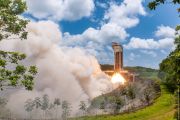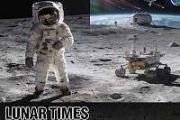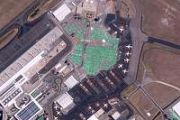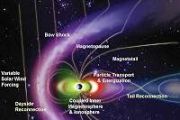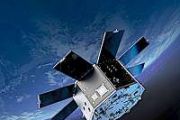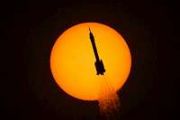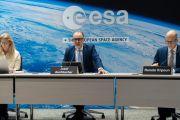
Copernical Team
HEO and BAE Systems Forge Partnership for Advanced Space Data Analysis
 HEO and BAE Systems have announced a collaboration aimed at delivering a comprehensive geospatial exploitation solution that integrates HEO's resolved Non-Earth Imagery (NEI) with BAE Systems' latest SOCET GXP software capability, Non-Earth Registration (NER). This combined approach enables the creation of precise sensor models for HEO's NEI data, enhancing customers' ability to derive critical
HEO and BAE Systems have announced a collaboration aimed at delivering a comprehensive geospatial exploitation solution that integrates HEO's resolved Non-Earth Imagery (NEI) with BAE Systems' latest SOCET GXP software capability, Non-Earth Registration (NER). This combined approach enables the creation of precise sensor models for HEO's NEI data, enhancing customers' ability to derive critical NASA Cleanroom Microbes Reveal Survival Strategies for Space and Biotech
 Researchers from the NASA Jet Propulsion Laboratory, King Abdullah University of Science and Technology (KAUST), and institutes across India and Saudi Arabia have discovered 26 new bacterial species in the cleanrooms used to assemble spacecraft. These microbes exhibit genetic traits linked to extreme resilience, offering insights into how life might survive in space and potential biotech applica
Researchers from the NASA Jet Propulsion Laboratory, King Abdullah University of Science and Technology (KAUST), and institutes across India and Saudi Arabia have discovered 26 new bacterial species in the cleanrooms used to assemble spacecraft. These microbes exhibit genetic traits linked to extreme resilience, offering insights into how life might survive in space and potential biotech applica NASA Study Reveals Venus Crust Surprise
 New details about the crust on Venus include some surprises about the geology of Earth's hotter twin, according to new NASA-funded research that describes movements of the planet's crust.
Scientists expected the outermost layer of Venus' crust would grow thicker and thicker over time given its apparent lack of forces that would drive the crust back into the planet's interior. But the paper
New details about the crust on Venus include some surprises about the geology of Earth's hotter twin, according to new NASA-funded research that describes movements of the planet's crust.
Scientists expected the outermost layer of Venus' crust would grow thicker and thicker over time given its apparent lack of forces that would drive the crust back into the planet's interior. But the paper Universe's End Predicted to Arrive Sooner but Still Billions of Times the Age of the Cosmos
 The latest research from Radboud University scientists Heino Falcke, Michael Wondrak, and Walter van Suijlekom builds on their earlier work, revealing that the ultimate fate of the universe may arrive much sooner than previously believed, though still an unimaginable timescale away.
In their new study, the team estimates that the final decay of the universe, primarily driven by Hawking-lik
The latest research from Radboud University scientists Heino Falcke, Michael Wondrak, and Walter van Suijlekom builds on their earlier work, revealing that the ultimate fate of the universe may arrive much sooner than previously believed, though still an unimaginable timescale away.
In their new study, the team estimates that the final decay of the universe, primarily driven by Hawking-lik Early Star Formation May Have Impacted Cosmic Microwave Background
 The afterglow of the universe, known as the cosmic microwave background (CMB), provides critical insights into the early cosmos and the formation of the first galaxies. However, researchers from the Universities of Bonn, Prague, and Nanjing have presented calculations suggesting that this radiation's strength may have been significantly overestimated. If validated, their findings could challenge
The afterglow of the universe, known as the cosmic microwave background (CMB), provides critical insights into the early cosmos and the formation of the first galaxies. However, researchers from the Universities of Bonn, Prague, and Nanjing have presented calculations suggesting that this radiation's strength may have been significantly overestimated. If validated, their findings could challenge Webb Uncovers New Mysteries in Jupiter's Aurora
 The James Webb Space Telescope, a collaboration between NASA, ESA, and CSA, has provided fresh insights into the intense auroras that dance around Jupiter, the largest planet in our Solar System. These auroras, hundreds of times brighter than those on Earth, have been studied with Webb's highly sensitive instruments, revealing previously unseen details.
Jupiter's auroras form when high-ene
The James Webb Space Telescope, a collaboration between NASA, ESA, and CSA, has provided fresh insights into the intense auroras that dance around Jupiter, the largest planet in our Solar System. These auroras, hundreds of times brighter than those on Earth, have been studied with Webb's highly sensitive instruments, revealing previously unseen details.
Jupiter's auroras form when high-ene Europa Clipper Conducts Critical Mars Flyby for Instrument Calibration
 NASA's Europa Clipper spacecraft, currently en route to Jupiter's moon Europa, recently utilized a close flyby of Mars to calibrate its critical infrared imaging system. The maneuver, conducted on March 1, positioned the spacecraft just 550 miles (884 kilometers) above the Martian surface, using the planet's gravity to adjust its trajectory for a more efficient journey to Jupiter.
The flyb
NASA's Europa Clipper spacecraft, currently en route to Jupiter's moon Europa, recently utilized a close flyby of Mars to calibrate its critical infrared imaging system. The maneuver, conducted on March 1, positioned the spacecraft just 550 miles (884 kilometers) above the Martian surface, using the planet's gravity to adjust its trajectory for a more efficient journey to Jupiter.
The flyb Martian Atmosphere Enables Advanced In-Situ Thermoelectric Power Generation
 The thin, CO2-rich Martian atmosphere presents a novel opportunity for in-situ thermoelectric power generation. With a composition of 95.7% carbon dioxide, 2.7% nitrogen, and 1.6% argon, it offers significant advantages for dynamic thermoelectric conversion systems. The dense molecular weight and high thermal stability of Martian gases support robust system performance, reducing the risk of gas
The thin, CO2-rich Martian atmosphere presents a novel opportunity for in-situ thermoelectric power generation. With a composition of 95.7% carbon dioxide, 2.7% nitrogen, and 1.6% argon, it offers significant advantages for dynamic thermoelectric conversion systems. The dense molecular weight and high thermal stability of Martian gases support robust system performance, reducing the risk of gas Glass Beads Provide Insight into Moon's Mysterious Interior
 Researchers from Curtin University, Nanjing University, and The Australian National University have discovered unusual high-magnesium glass beads collected by China's Chang'e-5 mission, revealing potential clues about the Moon's mantle. These tiny green glass beads, distinct from typical lunar impact formations, may have originated from deeper within the Moon, suggesting an asteroid impact likel
Researchers from Curtin University, Nanjing University, and The Australian National University have discovered unusual high-magnesium glass beads collected by China's Chang'e-5 mission, revealing potential clues about the Moon's mantle. These tiny green glass beads, distinct from typical lunar impact formations, may have originated from deeper within the Moon, suggesting an asteroid impact likel Space law doesn't protect historical sites, mining operations and bases on the Moon
 April 2025 was a busy month for space. Washington DC (SPX) May 13, 2025 Pop icon Katy Perry joined five other civilian women on a quick jaunt to the edge of space, making headlines. Meanwhile, another group of people at the United Nations was contemplating a critical issue for the future of space exploration: the discovery, extraction and utilization of natural resources on the Moon.
At th
April 2025 was a busy month for space. Washington DC (SPX) May 13, 2025 Pop icon Katy Perry joined five other civilian women on a quick jaunt to the edge of space, making headlines. Meanwhile, another group of people at the United Nations was contemplating a critical issue for the future of space exploration: the discovery, extraction and utilization of natural resources on the Moon.
At th 










